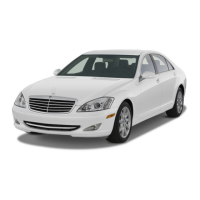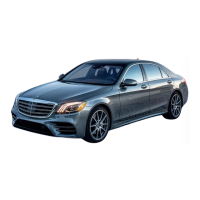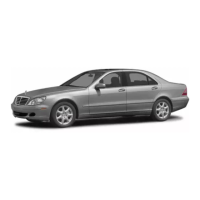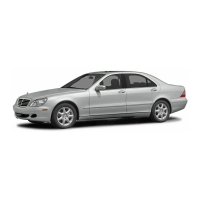Tire pressure
Notesontirepressure
&
WARNING Risk of accident duetoinsuf‐
ficient or excessivetirepressure
Underinflatedoroverinflatedtires pose the
following risks:
R
The tires mayburst,especiallyasthe
load and vehicle speed increase.
R
The tires maywear excessivelyand/or
unevenly, whichmay greatly impair tire
traction.
R
The drivingcharacteristics, as well as
steering and braking, maybegreatly
impaired.
#
Comply withthe recommended tire
pressureand checkthe tirepressureof
all tires including thesparewheel regu‐
larly:
R
at leastonce amonth
R
when theload changes
R
beforeembarkingonalongerjourney
R
if operating conditions change, e.g.off-
road driving
#
Adjustthe tirepressureasnecessary.
Tire pressurewhichistoo high or toolow can:
R
Shortenthe service lifeofthe tires.
R
Cause increased tiredamage.
R
Adversely affect driving characteristicsand
thus drivingsafety, e.g. due to hydroplaning.
&
WARNING Risk of an accident dueto
insufficient tirepressure
Tireswithpressurethat is toolow can over‐
heat and burst as aresult.
In addition,theyalso sufferfromexcessive
and/or irregular wear,whichcan significantly
impair thebraking properties and thehan‐
dling characteristics.
#
Avoid excessively lowtirepressures in
all thetires, including thesparewheel.
Tire pressurewhichistoo lowcan cause:
R
Tire faults as aresult of overheating.
R
Impaired handling characteristics.
R
Irregular wear.
R
Increased fuel consumption.
&
WARNING Risk of accident from exces‐
sivetirepressure
Tireswithexcessivelyhigh pressurecan
burst because they aredamaged moreeasily
by highway fill, potholes etc.
In addition, they also sufferfromirregular
wear,whichcan significantlyimpair thebrak‐
ing properties and thehandling characteris‐
tics.
#
Avoid excessively high tirepressures in
all thetires, including thesparewheel.
Tire pressurewhichistoo high can cause:
R
Increased brakingdistance
R
Impaired handling characteristics
R
Irregular wear
448
Wheels and tires

